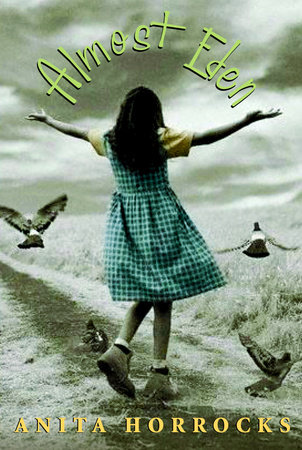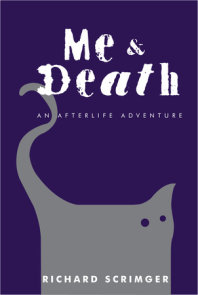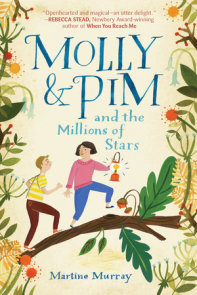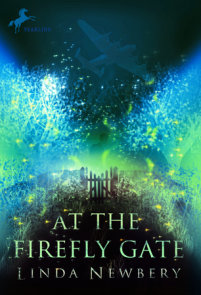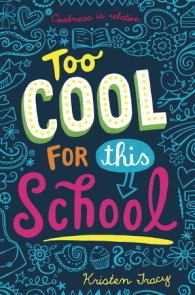TEACHING GUIDE
ABOUT THIS BOOK
Set in the hot prairie summer of 1970, Almost Eden is the portrait of young Mennonite girl struggling to come to terms with her mother’s mental illness.
Elsie’s plans to goof off with friends all summer fall apart when her mother ends up in the local mental hospital. Elsie is left at the mercy of her bossy older sister and is stuck babysitting Lena, her younger sister. Worst of all, Elsie blames herself for her mother’s illness. She vows to make things right; instead everything goes wrong. Elsie squabbles with her sisters, embarrasses her father, betrays her best friends, and abandons her little sister at the pool. She forgets the promise she made her mother to feed Tommy, the cat that lives in their alley, then is horrified when her father gives the cat to a farmer.
Reverend Funk, Grandma Redekop, Auntie Nettie, even her backsliding father — they all tell Elsie to pray for God’s help. Elsie prays fervently, but God doesn’t seem to be listening.
When on one visit Elsie’s mother doesn’t recognize her, her faith shatters. Determined to do something, Elsie sets out on her bike to get Tommy back. Lena follows her, and then a sinister stranger terrifies them both. Trapped and alone, Elsie discovers God’s presence when she least expects it. When the girls finally escape, Elsie knows exactly what she will do to bring hope to her mother. But can she and her friends pull off a daring midnight rescue?
ABOUT THIS AUTHOR
Anita Horrocks grew up in a small town on the prairie. Almost Eden is her fourth novel for young readers and the first to draw on her own Mennonite background. Before turning to writing, Anita worked in public relations and as a park interpreter. Early in her career she spent a summer digging for dinosaur fossils. She has a BA in English, a certificate in marketing, and diplomas in print journalism and ecological sciences. A stepmother and grandmother, Anita lives with her husband in Lethbridge, Alberta.
TEACHING IDEAS
Curriculum Connections
Language Arts
When Elsie and Lena are stuck in a tree, they sing songs and recite poetry and bible verses. How does this help them? Discuss the purpose of literature, and what favorite stories and poems mean to your students.
On page 194 Elsie recites the poem, "Abou Ben Adhem"
by James Leigh Hunt, which is printed below. Discuss the meaning of the poem and what significance it might have for a Mennonite girl like Elsie. Does anyone have a parent or grandparent who remembers learning the poem in school?
Abou Ben Adhem
by James Henry Leigh Hunt, c. 1838
Abou Ben Adhem (may his tribe increase!)
Awoke one night from a deep dream of peace,
And saw, within the moonlight in his room,
Making it rich, and like a lily in bloom,
An angel writing in a book of gold:–
Exceeding peace had made Ben Adhem bold,
And to the Presence in the room he said
ÒWhat writest thou?"–The vision raised its head,
And with a look made of all sweet accord,
Answered "The names of those who love the Lord."
"And is mine one?"said Abou. "Nay, not so,"
Replied the angel. Abou spoke more low,
But cheerly still, and said "I pray thee, then,
Write me as one that loves his fellow men."
The angel wrote, and vanished. The next night
It came again with a great wakening light,
And showed the names whom love of God had blessed,
And lo! Ben Adhem’s name led all the rest.
Social Studies
Elsie talks about her great great grandfather and his family arriving in Canada in the 1870s. Ask students to research Mennonite immigration: what is a Mennonite; when and where else in Canada did Mennonites settle; why did the Canadian government want immigrants in the late 1800s? Have students find out how and when their own families came to Canada.
Physical Education / Health
Elsie is horrified to learn that her mother is getting shock treatments. Have students find out more about depression and its treatments. What are shock treatments or ECT therapy? How is it used to treat depression? What other treatments are there for different kinds of depression? Is ECT therapy still used today?
Science
On the day Elsie and Lena go looking for Tommy, a thunderstorm traps them at the abandoned farmhouse. Later that night, Elsie wakes up to find the farmyard enshrouded with fog. Explore a variety of weather systems and their origins. What weather conditions result in thunderstorms? What conditions result in fog? Could there really be fog on a night such as Elsie describes at the farmyard?
Tommy the alley cat is sent to a farm miles from town yet finds his way back to Elsie’s house. Is this possible? Do cats have a homing instinct and how does it work? What other stories can you find about animals that find their way home again?
Visual Art
Have each student create a movie poster for Almost Eden by illustrating a scene from the novel that conjured up a vivid mental image. Have them include a tagline for the poster, a short phrase that might grab people’s attention and make them want to see the movie.
Geography
Ask students to draw a map of Hopefield based on Elsie’s descriptions of her town on pages 4 to 6, 25, 233,234, and 272, as well as any other passages they find.
DISCUSSION AND WRITING
Discussion Questions
1. Elsie’s experience shakes the foundations of her faith in God. What does it mean to have faith? How has Elsie’s faith changed by the end of the story? Compare her prayer on pages 59 and 60 with her final prayer on page 275. What kind of courage would it take to question what you’ve been brought up to believe in? What might cause someone to start to question?
2. Elsie’s mom says even Mennonites don’t agree on what it means to be a Mennonite. Using a variety of resources, find out more about Mennonites. What is the difference between being born with a Mennonite background and belonging to a Mennonite church? Would you call both Mennonites? What different ethnic groups are represented in the Mennonite church? Compare this to other religions. Are all Buddhists Asians? Are all Muslims Arabs? Are all Mormons Caucasian?
3. Elsie has a large extended family with numerous aunts
and uncles. Why do you think her grandparents had so many children? Why did most early Mennonite settlers have large families? Were the reasons related to the time period in which they lived? To their religion? To their occupations as farmers? Did other groups in Canada have large families as well? Are families smaller or larger than they used to be?
4. Elsie is the middle of three girls and often squabbles with her sisters. What kinds of problems does she have with her sisters? How do her sisters help her? Would you say Elsie’s family is close? Why or why not? What would you rather be–the oldest, middle, or youngest of three children? Why?
5. Pacifism is one of the tenets of the Mennonite faith. What is pacifism? Are there other groups or people besides Mennonites who are pacifists? What is a conscientious objector?
6. Spirituality exists inside and outside of organized religion. How do different religions see and feel God? What are some of the ways people who belong to different religions worship God differently? Do you have to belong to an organized religion or church to experience God?
7. What do you think the title of the novel means? Does it have a positive or negative meaning, or both? Try coming up with your own title.
SUGGESTED ACTIVITIES
Such a Dummkopp
Elsie and her family speak Plautdietsch, which is a dialect of German. German and English share the same origins. Have students list 10 Plautdietsch words they find in the book. They should write down what they think each word means based on how it is used. Then have them check the glossary at the back to see how close they were.
Be It Resolved
Hold a class debate on the merits of pacifism. Have them come up with their own resolutions or use one of the following:
Pacifism works for individuals, but not countries.
Canada should be a pacifist country.
Games Our Parents Played
Tjnippsbrat, or crokinole, is a game Elsie plays with her mother. Tjnipps in Plautdietsch means to snap the forefinger from the thumb, to flick. Brat means board. Bring a crokinole board to school and have a class tournament. Or ask students to bring in other games they play with their families.
You Eat That?
Elsie’s mom bakes ammonia cookies, a traditional Mennonite cookie usually made with peppermint icing for Christmas. The recipe uses baking ammonia (also called ammonia carbonate or hartshorn) as a leavening agent instead of baking soda or baking powder. Research the origin of baking ammonia and its other uses. Pass around a sample for students to smell. Bake a batch of ammonia cookies to share (recipes are available online), or have students bake them in class.
Schmack Gout
Vaspa (pronounced faspa) is a Mennonite tradition. The light lunch is usually held in late afternoon (coffee time), and features buns such as Tjrinjle (twisted buns) or Tweeback (double-decker buns), sausage and cheese, and cookies, pie, or traditional sweets such as Piroski (fruit turnovers) or Platz (crumb cake). Have a Mennonite potluck Vaspa. Have students research and volunteer to bring one of the traditional dishes mentioned in Almost Eden, or any other Mennonite dish they discover or know about. Alternatively, ask students to bring in dishes or treats from their own ethnic background and hold a multicultural potluck.
That ’70s Party
Elsie’s story takes place in 1970 — three years after Canada’s 100th birthday. Elsie and her friends listen to Donny Osmond singing ÒPuppy Love.Ó Find out what other songs, fashions, and sayings were popular in the early ’70s. Host a class ’70s party. Include clothes like those Elsie and her friends would have worn and ’70s music.
Stories in the Sky
Elsie’s wonder at the night sky filled with stars helps restore her belief in God. Plan a class trip to a local observatory or introduce students to the constellations through sky charts. Have each student research a constellation, including the name and any stories they can find about it. See if they can locate the constellation in the night sky.
OTHER TITLES OF INTEREST
Other books by Anita Horrocks
Topher ISBN 077376092X
What They Don’t Know ISBN 0773760016
Breath of a Ghost ISBN 0773674535
Suggested Reading
The Crazy Man by Pamela Porter
Ages 9-12, ISBN 0888996942
Heck, Superhero by Martine Leavitt
Ages 9-12, ISBN 0889953333
Men of Stone by Gayle Friesen
Ages 9-12, ISBN 1550747827
ADDITIONAL RESOURCES
http://www.mbconf.ca/index.en.html
http://www.gameo.org
http://www-personal.umich.edu/~bpl/mennocon.html
http://www.mhsc.ca
http://www.en.wikipedia.org/wiki/Mennonites
http://www.canadian-health-network.ca
http://www.cmha.ca
http://www.canmat.org
×
Become a Member
Just for joining you’ll get personalized recommendations on your dashboard daily and features only for members.
Find Out More Join Now Sign In








